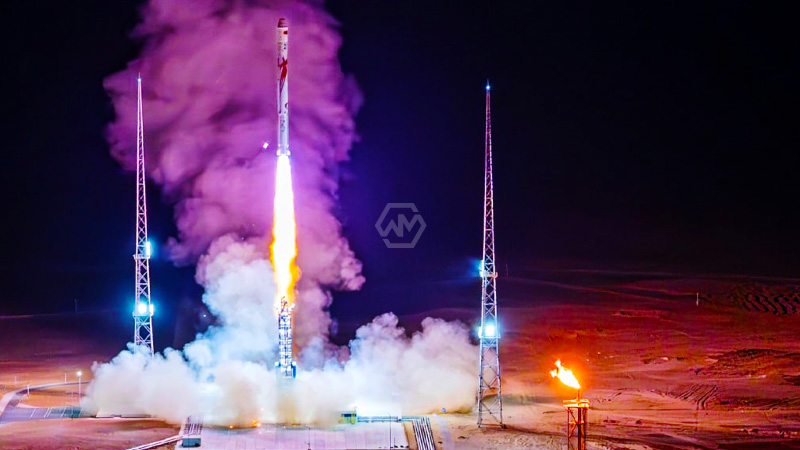- The Zhuque 2 Y-3 rocket successfully launched three satellites into a prearranged orbit.
- LandSpace intends to carry on producing commercial launch rockets with high capacities, low costs, and exceptional reliability.
- The rocket’s capacity could have carried up to 1.5 tonnes into a sun-synchronous orbit 500 kilometers away.
The Zhuque 2 Y-3 rocket, operated by China’s private aerospace company LandSpace, successfully launched three satellites into a prearranged orbit. The launch signaled a new phase in China’s commercialization of liquid-powered rockets and proved the stability and dependability of the technology.
LandSpace intends to carry on producing commercial launch rockets with high capacities, low costs, and exceptional reliability. Additionally, the company declared that it would double the number of launches it does each year, with 12 launches planned by 2026.
A Methane Rocket
The Spacety-developed Honghu and TY-33 satellites, as well as the Hongqing Technology-built Honghu 2, were deployed into a 460 km sun-synchronous orbit. The rocket’s capacity could have carried up to 1.5 tonnes into a sun-synchronous orbit 500 kilometers away.
Its payload capacity at that orbit is anticipated to increase to 4 tonnes with improvements. With the payloads removed, the rocket had a lift-off mass of 220 tonnes and measured 49.5 meters long by 3.35 meters in diameter.
China wants to lead the world in space exploration by 2045 and leverage space innovation to propel its national development. In China, private tech startups such as LandSpace have sprung up and are attempting to overtake SpaceX.
The Tianlong 2 was launched in April by Beijing-based Space Pioneer using kerosene derived from coal. In December 2022, LandSpace made an unsuccessful attempt to launch a methane-liquid oxygen rocket.
It was successful in July, marking the first time that methane has been launched commercially and ushering in a new era for the gas.



